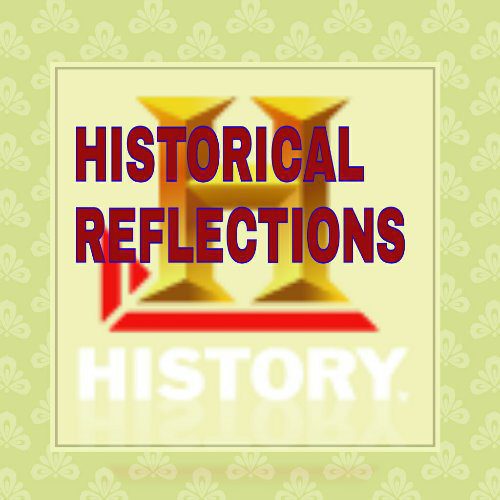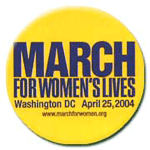This Week in History April 21st – 27th
Monday
April 21, 1856
Stonemasons and other construction workers on building sites around Melbourne, Australia, stopped work and marched from the University of Melbourne to Parliament House. They advocated eight hours for work, eight hours for recreation, and eight hours for rest. Their direct action protest was a success, becoming the first organized workers in the world to achieve an eight-hour workday, inspiring the celebration of Labor Day and May Day.
The Peace Cap
back in stock for spring
click to order
April 21, 1989
Six days after the death of Hu Yaobang, the deposed reform-minded leader of the Chinese Communist Party, some 100,000 students from more than 40 universities gathered at Beijing’s Tiananmen Square to commemorate Hu prior to his funeral.
They voiced their discontent with China’s authoritarian communist government, and called for greater democracy. Ignoring government warnings of violent suppression of any mass demonstration, the students were joined by workers, academics, and civil servants.
Pro-democracy student protesters face-to-face with policemen outside the
Great Hall of the People in Tiananmen Square the day of Hu Yaobang’s funeral.
Tuesday
April 22, 1963
The Mothers for Peace, a group made up of Catholic Workers, members of PAX (which became Pax Christi in 1972), Women Strike for Peace, Women’s International League for Peace and Freedom (WILPF), the Fellowship of Reconciliation, and others, met with Pope John XXIII to plead for a condemnation of nuclear war and the development of nonviolent resistance.
About Women Strike for Peace
click to buy
April 22, 1970
Poster at the first Earth Day
On the first Earth Day observance, an estimated 20 million participated in peaceful demonstrations of concern for the environment across the U.S. An estimated 20 million people participated including ten thousand grade schools and high schools, two thousand colleges across one thousand communities.
1st Earth Day, 1970
The ecology button and sticker reissued
Read about the history about the ecology symbol
April 22, 1992
50,000 attended “Don’t Count On Us,” an anti-war rock concert in Belgrade, Serbia. It was to the nationalist regime of President Slobodan Milosevic an expression of the resistance within society to the military aggression he had been pursuing in the name of Serbian nationalism. Following the collapse of the Soviet Union, the various constituent republics of the former Yugoslavia—Slovenia, Croatia, Macedonia and Bosnia-Herzegovina—had declared their independence.
Following a military draft call-up, fewer than 10% had reported for duty, and there was considerable dissension within what was then still called the Yugoslav People’s Army.
Read more
Peace quote
April 22, 1997
On Earth Day, Plowshares activists Donna and Tom Howard-Hastings used handsaws to cut down three poles in northern Wisconsin supporting the ELF (Extremely Low Frequency) transmitter for communication with submerged Trident nuclear submarines. After the poles were cut they were decorated with photos of children and posted with documents about international law and treaties outlawing nuclear weapons. They also placed stakes to mark tree seedlings under the transmission lines that they said were “doomed to the cutting bar.”
They cut a section of one of the downed poles, carrying it to the nearby transmitter site where they turned themselves in to security personnel.
They were then taken into custody by county sheriffs. An ABC-TV news affiliate, along with reporters from two public radio stations, were on hand to observe what happened.
During the three-day jury trial on charges of sabotage and property destruction in Ashland County . . .continued (info, photos, links). . .
Wednesday
April 23, 1968
Students at Columbia University in New York City occupied campus buildings to protest military research and the razing of part of the neighboring Morningside Heights section of Harlem to make way for a new student gymnasium.
Perspective from 40 years on by Mark Rudd,
one of the Columbia leaders
April 23, 1971
In the final event of Operation Dewey Canyon III, nearly 1,000 Vietnam War veterans threw their combat ribbons, helmets, and uniforms on the U.S. Capitol steps along with toy weapons.
Read more about Operation Dewey Canyon III
April 23, 1996
Nineteen Ukrainian demonstrators were arrested in the capital, Kiev, during an illegal anti-nuclear protest marking the 10th anniversary of the nuclear accident at Chernobyl, the largest and deadliest nuclear accident in history [see April 26, 1986].
Chernobyl veterans
Thursday
April 24, 1916
The Easter Uprising began when between 1,000 and 1,500 members of the Irish Republican Brotherhood attempted to seize Dublin and issued the declaration of Irish independence from Britain.
The seven signatories of the Irish Proclamation
Read the Proclamation
Read more
April 24, 1934
This editorial cartoon appeared in New Masses magazine. It refers to the attempt of anti-radical vigilantes and repressive college administrators to disrupt the first national student strike against war.
NO WAR
click to buy
April 24, 1967
At a news conference in Washington, D.C., General William Westmoreland, senior U.S. commander in South Vietnam, said that the enemy (considered to be North Vietnam and the Viet Cong southern insurgents) had “gained support in the United States that gives him hope that he can win politically that which he cannot win militarily.”
Though he said that ninety-five percent of the people were behind the United States effort in Vietnam, he asserted that the American soldiers in Vietnam were “dismayed, and so am I, by recent unpatriotic acts at home.” This criticism of the anti-war movement was not received well by many in and out of the movement, who believed it was both their right and responsibility to speak out against the war.
General Westmoreland meeting President Lyndon Johnson later in 1967, Cam Ranh Bay, Vietnam
Readers comment
“I used it (the newsletter) last year when I taught the Nonviolence: Theory & Practice class, and the students really seemed to like it, so I’m including it in their weekly reading again this semester…I think it’s a fabulous resource, and includes so many events that people hadn’t even heard of or don’t usually think about.”
– Karen, Center for Applied Conflict Management
April 24, 1971
500,000 demonstrated against the Vietnam War in Washington, D.C. It was the largest-ever demonstration opposing U.S. war; 150,000 marched at a simultaneous rally in San Francisco.
Very popular
A button inspired by Gandhi
1.25″
Union printed Detroit made
click to order
April 24, 1987
On the World Day for Laboratory Animals, nationally coordinated demonstrations occurred in California, Arizona, Florida, New York, Minnesota, Louisiana, Michigan, Pennsylvania, Nevada, Tennessee, and other states. It was the largest display of civil disobedience for animal rights ever. Hundreds of activists across the country blocked access to university laboratories and more than 150 were arrested nationwide.
The day was designated to bring attention to the treatment of lab animals used in testing of medical and other products, sponsored in Congress by the late Tom Lantos (D-California).
World Day Laboratory Animals
Friday
April 25, 1969
The Reverend Ralph David Abernathy, head of the Southern Christian Leadership Conference, and 100 others were arrested while picketing a Charleston, South Carolina, hospital to support unionization by its workers.
Read more about Reverend Ralph David Abernathy
April 25, 1974
A peaceful uprising by both the army and civilians, known as the Carnation Revolution (Revolução dos Cravos), ended 48 years of fascism in Portugal. People holding red carnations urged soldiers not to resist the overthrow and many placed the flowers in the muzzles of their rifles. The regime killed four before giving in to the popular resistance.
Read more Lisbon demonstration ’74
¿Diga Português?
(a luta continua=the stuggle continues
in português)
Union printed Detroit made
click to order
April 25, 1993
Nearly one million marched for homosexual rights and liberation in Washington, D.C.
Health Care Rally at April 25, 1993 The AIDS quilt on display as part of the event.
click to order
April 25, 2004
The March for Women’s Lives drew a record 1.15 million people to Washington, D.C. The marchers wanted to protect legal and safe access to reproductive services including abortion, birth control and emergency contraception.
Organized by a coalition that included the National Organization for Women (NOW), Black Women’s Health Imperative, Feminist Majority, National Abortion Rights Action League (NARAL), the National Latina Institute for Reproductive Health, and Planned Parenthood, along with the American Civil Liberties Union (ACLU).
The March for Women’s Lives was the largest protest in U.S. history.
Read more
click on button
to order
Saturday
April 26, 1966
Rodolfo “Corky” Gonzales founded the Crusade for Justice, a Chicano activist group, in Denver, Colorado, and marked his departure from the Democratic Party. It was the beginning of a nationalist strategy for the attainment of Chicano civil rights.
Read more
Rodolfo “Corky” Gonzales
¿Habla Español o Português?
(paz=peace in spanish)
Union printed Detroit made
click to order
April 26, 1968
A national student strike against the Vietnam war enlisted as many as one million high school and college students across the U.S.
April 26, 1986
A major accident occurred at the Chernobyl nuclear power plant in the Ukraine near the border with Belarus, both then part of the Soviet Union (Union of Soviet Socialist Republics). An explosion and fire in the No. 4 reactor sent radioactivity into the atmosphere. Only after Swedish authorities reported the fallout over their country 1385 km away (860 miles), did Soviet authorities reluctantly admit that an accident had occurred.
During a fire that burned for 10 days, 190 tons of toxic materials were expelled into the atmosphere (3% of the reactor core). Winds blew 70% of the radioactive material into neighboring Belarus.
The explosion at Chernobyl was the world’s largest-scale nuclear accident. Approximately 134 power-station workers were exposed to extremely high doses of radiation directly after the accident. About 31 of these people died within 3 months. Another 25,000 “liquidators”—Soviet soldiers and firefighters who were involved in clean-up operations — have died since the incident of diseases such as lung cancer, leukemia, and cardiovascular disease.
400,000 were evacuated and over 2,000 towns and villages were bulldozed to the ground in areas considered permanently contaminated.
Deaths and illnesses directly attributable to radiation exposure continue.
continued (info, photos, links). . .
No Nuclear
– a series –
click to view all
and order
Sunday
April 27, 1936
The UAW (United Automobile, Aerospace, and Agricultural Implement Workers of America), gained autonomy from the AFL (American Federation of Labor), becoming the first democratic, independent labor union concerned with the rights of unskilled and semi-skilled laborers
April 27, 1937
The Social Security Administration began operation by making its first payment to an American protected under the law, principally the elderly, and children who’ve lost their parents.
April 27, 1942
Sixteen pacifists, including Evan Thomas and A.J. Muste, refused to register for the World War II draft. Muste was a Quaker activist, founder of the Fellowship of Reconciliation, and author of two pamphlets that same year, War Is the Enemy and Wage Peace Now.
A.J. Muste still working for peace 25 years later
with Dorothy Day, leader of the Catholic Worker movement.
April 27, 1994
South Africa held its first multiracial elections and chose anti-apartheid leader Nelson Mandela (with more than 62% of the vote) to head a new coalition government that included his African National Congress Party.
Adejokeiyabadan’s blog


